<<Return to 2024 User Meeting
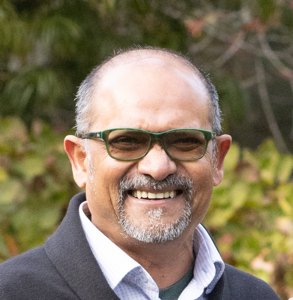 |
Musahid AhmedSenior Scientist Probing Complex Chemistry at the Molecular Level with Vibrational Spectroscopy and X-Ray Tools Abstract Understanding the origins of structure and bonding at the molecular level in complex chemical systems spanning magnitudes in length and time are of paramount interest in physical chemistry. Heterogeneous systems play crucial roles in solvation, micro-confinement, crystallization, self-assemblies, interfacial dynamics, and structural relaxation, among many other processes. These areas represent some of the most fundamental topics in chemistry and are extremely relevant to study if we seek to decarbonize our energy sources and live in a sustainable way in the future. In nature, these processes are driven both by non-covalent interactions such as van der Waals forces and hydrogen bonds and by covalent bonds. We have coupled vibrational spectroscopy and x-ray-based techniques with a series of microreactors and aerosol beams to tease out these intricate and sometimes subtle interactions, such as hydrogen bonding, proton transfer, and non-covalent interactions. Specifically, I will describe our recent results on probing the interfacial nanostructure of a deep eutectic solvent, x-ray thermometry to probe the phase state of a hydrogen bonded aerosol, and x-ray scattering and spectroscopy experiments to probe chemical reactions on the surface of an organic aerosol. Bio Musahid Ahmed is a senior scientist in the Chemical Sciences Division at Lawrence Berkeley National Laboratory. He received his PhD in 1989 from Cambridge University and then went on to pursue postdoctoral fellowships at Leicester, Gottingen, and Manchester. He started probing water cluster beams with vacuum ultraviolet radiation at the Daresbury synchrotron which led him to join Berkeley Lab in 1995 to pursue a career in using photon tools with molecular beams. Probing gas, interfacial, and condensed phase chemical dynamics with x-ray, infrared, and terahertz spectroscopy is his passion. Recently he has discovered that ultrafast spectroscopy, x-ray scattering, and Raman spectroscopy are cool tools to allow him to chip away at deciphering dynamics in complex systems. He has published over 200 papers, most of them from the Chemical Dynamics Beamline (9.0.2) at the Advanced Light Source and is a fellow of the American Physical Society. |
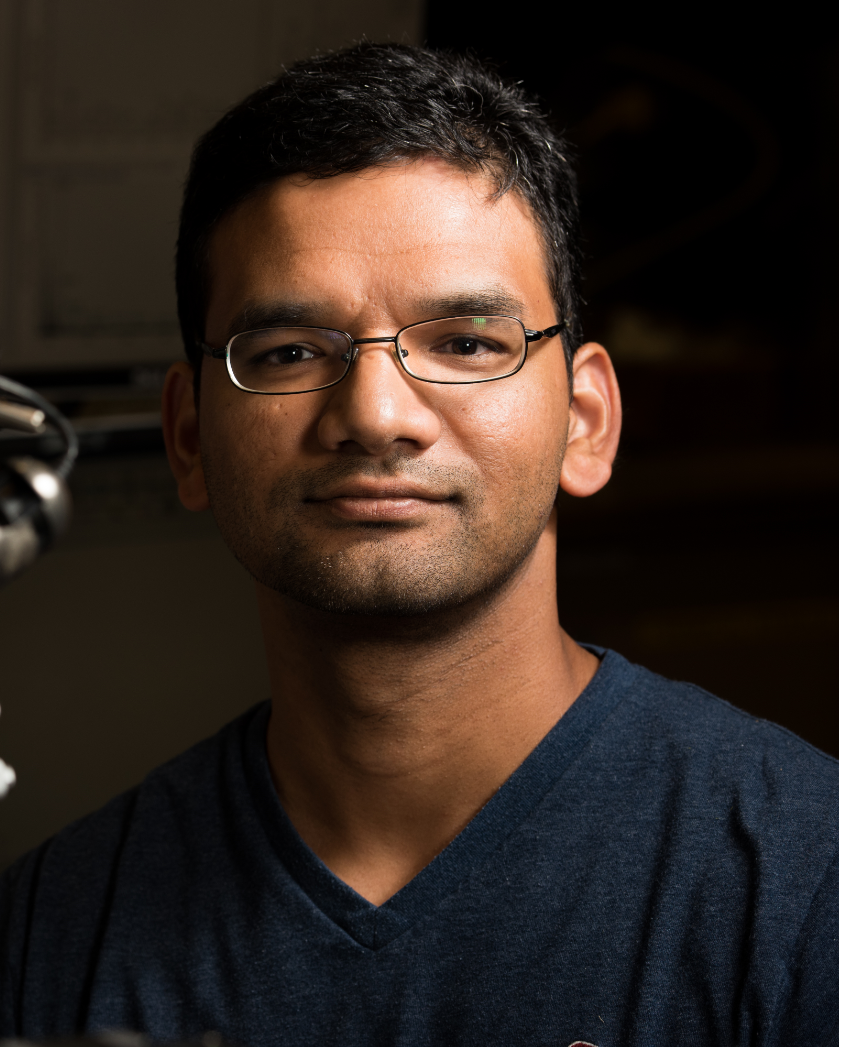 |
Swarup ChinaChemist Chemical Imaging of Atmospheric Particles Abstract Atmospheric particles affect the climate directly by scattering and absorbing sunlight and indirectly by participating in warm and cold cloud formation. Atmospheric particles contain multicomponent species. Mixing state and composition of the atmospheric particles can strongly influence the Earth’s energy budget and their cloud formation potential. Multimodal chemical imaging and in-situ experiments to mimic real-world environmental conditions are necessary to better understand the atmospheric processes. In this talk, I will discuss some of the recent advances in our understanding of atmospheric processes as well as challenges that we need to investigate in the future. Bio Dr. Swarup China leads the Terrestrial-Atmospheric Processes Integrated Research Platform at Environmental Molecular Sciences Laboratory located at Pacific Northwest National Laboratory. His significant research areas include atmospheric aerosol properties and processes, atmospheric aerosol chemistry, heterogeneous ice nucleation, and aerosol-cloud interactions. He utilizes field studies, laboratory measurements to study atmospheric processes and interactions between ecosystems. China also studies the chemical aging of atmospheric particles through multi-phase atmospheric chemistry and investigates the effect of physicochemical properties of complex atmospheric particles on aerosol microphysical properties and cloud development. He aims to better understand the physical chemistry of atmospheric particles controlling aerosol-cloud interactions. |
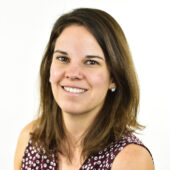 |
Emily B. GrahamEarth Scientist The Molecular Observation Network (MONet): Enabling Molecular and Microscale Mechanistic Understanding of Soil Organic Matter Processes Abstract Emily B. Graham, Qian Zhao, Tamas Varga, Jason Toyoda, William Kew, Andrew Townsend, Izabel Stohel, William Petersen, Caroline Simonsen, Tom Wietsma, Mark Rockhold, Cheng Shi, Young Song, Arjun Chakrawal, Sarah Leichty, Odeta Qafoku, and John Bargar Biogeochemical cycling of carbon and nutrients controls the ability of soils as carbon sinks or sources, yet we have a poor understanding of molecular-scale processes within terrestrial ecosystems. To fill this gap, the Molecular Observation Network (MONet) open science user program, led by the Environmental Molecular Sciences Laboratory (EMSL), is providing molecular-level information on the composition and structure of soil, water, and resident microbial communities. Scientists participating in the MONet Soil Function user research calls gain access to EMSL’s premier high-resolution molecular and microstructural characterization capabilities including, Fourier Transform Ion Cyclotron Resonance (FTICR) mass spectrometery and X-ray computed tomography, and Joint Genome Institute’s metagenome sequencing and annotation workflows. MONet soil analyses follow standardized workflows that enable high consistency and throughput that reduce uncertainty in data. The resulting data are open to the scientific community in a searchable FAIR database, explorable using online data visualization and processing tools, and supported by training and community engagement programs. These standardized soil molecular and microscale data are urgently needed at regional and larger scales to improve biogeochemical process representations, provide model inputs, and reduce uncertainty in Earth System and climate predictions. This talk will provide an overview of MONet, existing beta visualization and analysis tools, and science use cases. ALS users have the opportunity to leverage MONet for applications including understanding metal speciation in soil environments, chemical and physical protection mechanisms of soil organic matter, and redox processes that underlie soil biogeochemistry. Bio Emily B. Graham is a quantitative ecosystem ecologist specializing in molecular at the Pacific Northwest National Laboratory (PNNL). She holds a Bachelor of Science in Biology from the University of North Carolina at Chapel Hill and a Master’s and Ph.D. in Biogeoscience from the University of Colorado at Boulder. Leveraging her expertise in molecular ecology, she explores the intricate relationships between genetic diversity, ecosystem dynamics, and environmental change. Dr. Graham leads the Biogeochemical Transformations research platform at EMSL, a DOE User Facility, where she plays in integral role in the Molecular Observation Network. She also integrates molecular techniques to study urban biogeochemistry and resilience as part of an early career award. Through her dedication to open science, Dr. Graham not only advances the field of ecosystem ecology but also promotes greater transparency and reproducibility in environmental research. |
 |
B.V. Venkatar PrasadProfessor and Chair Human Noroviruses – Role of Conformational Plasticity Entry and Antibody Neutralization Abstract Human noroviruses (HuNoVs), the leading cause of epidemic acute gastroenteritis, show enormous genotypic diversity. They are classified into several genogroups and genotypes. The HuNoVs belonging to genogroup II and genotype 4 (GII.4) are the most prevalent. These HuNoVs are known to undergo epochal evolution with the emergence of a new variant every 2-3 years. Susceptibility to HuNoVs is determined by genetically controlled expression of histo-blood group antigen (HBGA). HBGA binding is critical for HuNoV infectivity, and the binding site is well conserved within the HuNoV genogroups, making HBGA-blockade a potent neutralization mechanism. However, for epochally evolving GII.4 variants, HBGA-blocking may be effective for a particular variant but not for multiple variants due to sequence variability. From our extensive structural studies on GII.4 HuNoV using X-ray crystallography and cryo-EM with a human antibody and a llama nanobody, we discovered that capsid plasticity is a susceptible feature that antibodies can exploit for neutralization. These molecules bind to their respective epitopes in the P domain, requiring the P domain to shift from a stable resting conformation to a less stable raised conformation. The talk will focus on how these two antibody molecules exploit capsid plasticity to access their epitopes to neutralize multiple GII strains and GII.4 epochal variants and how conformational dynamics can be a critical factor in cell entry. This work was supported by the NIH grant P01 AI057788 and a grant (Q1279) from the Robert Welch Foundation. Bio Bidadi. V Prasad, Ph.D., is Alvin Romansky, Professor and Chair in Biochemistry in the Department of Biochemistry and Molecular Biology of Baylor College of Medicine, USA. He received his doctorate in Molecular Biophysics from the Indian Institute of Science. After his post-doctoral training at the University of Arizona in three-dimensional electron cryo-microscopy of biological macromolecules, he joined Baylor College of Medicine as a faculty member in 1988. His research interests include structural biology, proteomics, computational biology, bioinformatics, imaging techniques, high-throughput technologies, and drug discovery. His seminal contributions to the structural biology of viruses such as rotaviruses and caliciviruses are internationally recognized. He has authored numerous peer-reviewed articles in major scientific journals and book chapters. He serves on various national review panels, including NIH study sections, and is currently an Editorial Board member of the Journal of Virology. He is a recipient of the Young Scientist award from the Indian National Science Academy, the MERIT award from the US National Institutes of Health, and the Indo-US Visiting Professorship from the American Society of Microbiology. He is a Fellow of the American Academy of Microbiology. |
 |
Kevin WilsonSenior Scientist Probing the Multiphase Chemistry of Aerosols using Synchrotron Radiation Abstract Submicron particles (i.e., aerosols) play substantial roles in the chemistry of the troposphere with larger scale impacts on climate and human health. The presence of aerosols increases substantially the microphysical complexity needed to accurately model the chemical evolution of current and future atmospheres. This complexity arises from the coupling of reaction and diffusion timescales, which can be largely ignored in reaction networks of isolated gas phase molecules. In this talk, I will highlight our work on uncovering aerosol oxidation mechanisms; where synchrotron-based vacuum ultraviolet photoionization mass spectrometry and nanoparticle X-ray photoelectron spectroscopy are key tools for developing a detailed molecular picture of how free radicals and Criegee intermediates govern the heterogeneous reactivity of organic aerosols. Bio After receiving a B.A. in Chemistry from Willamette University in 1993, Dr. Wilson took a research assistant position at Los Alamos National Laboratory (LANL) where he studied the chemistry of polar stratospheric ice clouds using nonlinear optics. During this time, he also earned a M.A. degree in Liberal Arts from St. John’s College in Santa Fe, NM. He then earned a Ph.D. in Physical Chemistry (2003) from the University of California, Berkeley. His thesis work, under the supervision of Richard Saykally and supported by an ALS Doctoral Fellowship, focused on probing liquid surfaces using synchrotron radiation. In 2003 he returned to LANL after receiving a Fredrick Reines Distinguished Postdoctoral Fellowship, where he began developing novel instrumentation for the sensitive detection of atmospheric particles. In 2004 he returned to LBNL as a limited term scientist at the Chemical Dynamics Beamline. In 2012, Wilson won an Early Career Award from the Office of Science (DOE), enabling his research group to focus on understanding the fundamental reaction mechanisms of organic molecules at liquid water interfaces. Dr. Wilson has served in leadership positions as the Deputy Director (2011-2023) and interim Director (2017-2019) of the Chemical Sciences Division. His other research interests include soot formation chemistry, low temperature gas phase reactions in planetary atmospheres and the heterogeneous atmospheric chemistry of organic aerosols. |
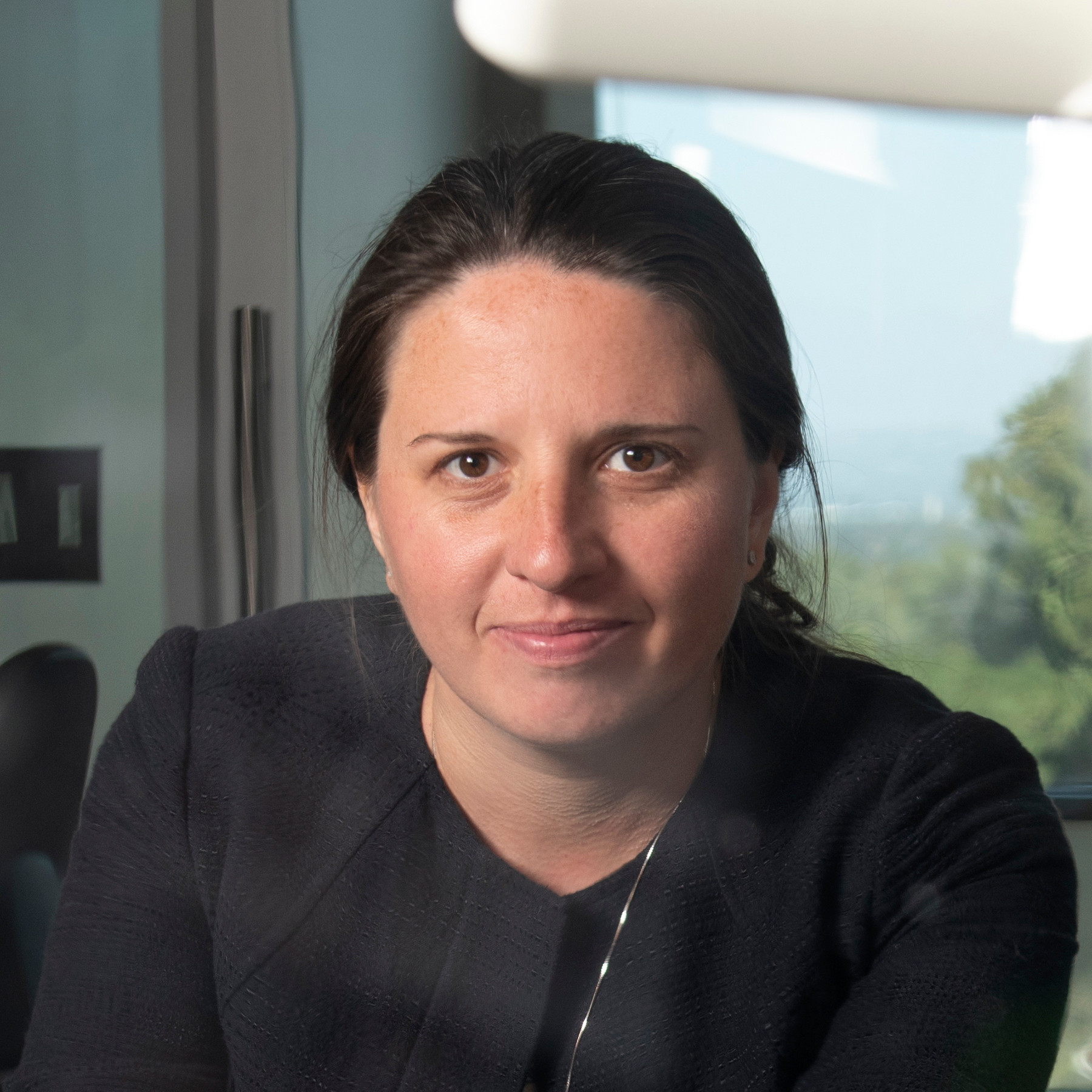 |
Iryna ZenyukAssociate Professor, Chemical and Biomolecular Engineering Use of Synchrotron X-Ray Computed Tomography and X-Ray Diffraction to Study Electrochemical Hydrogen Technologies Abstract Polymer electrolyte fuel cells and electrolyzers are promising energy conversion devices that carry a promise to decarbonize various sectors. These devices use porous micron-scale components as catalyst layers and transport layers. Fuel cells rely on expensive Pt to catalyze sluggish oxygen reduction reaction, whereas electrolyzers use IrOx catalysts to enable oxygen evolution reactions. Being precious and rare metals there is need to reduce use of Pt and IrOx within fuel cells and electrolyzers to reduce their overall stack cost. Currently, industry putting into the stacks more of these catalysts to compensate for some of their loss during the operation. To reduce the catalyst loadings we need to better understand degradation mechanisms. X-ray computed tomography (CT) and x-ray diffraction (XRD) are useful tools to visualize catalyst layer morphology and particle sizes at the beginning and after device operation. We observe heterogeneous catalyst degradation that depends on selected components and operation conditions. These studies suggest design improvements to enable more durable hydrogen technologies. Bio Professor Zenyuk holds a B.S. (2008) in mechanical engineering from the New York University Tandon School of Engineering. She continued her studies at Carnegie Mellon University, where she earned M.S. (2011) and Ph.D. (2013) in mechanical engineering. Zenyuk did her postdoctoral fellowship at Lawrence Berkeley National Laboratory in Electrochemical Technologies Group. She is a recipient of the NSF CAREER award (2017), Interpore society Fraunhofer Award for Young Researchers (2017), Research Corporation for Science Advancement, Scialog Fellow in Advanced Energy Storage (2017-2019), Electrochemical Society (ECS) Toyota Young Investigator Award (2018), UCI Samueli School of Engineering Early Career Faculty Excellence in Research Award (2019) and ECS Energy Technology Division Srinivasan Young Investigator Award (2021), UCI Beal Applied Innovations Early Career Innovator of the Year (2021), UCI Samueli School of Engineering Mid Career Faculty Excellence in Research Award (2022). Prof. Zenyuk published over 100 journal publications and delivered more than 100 invited presentations on topics of energy conversion and storage. Twitter handle: @muziolog |
Early Career Panel Discussion
Tuesday, August 13, at 10:20 am
Building 50 Auditorium
What questions do you have for our panelists? Enter them in advance here. Like someone else’s question? Give it a thumbs up to move it up in the rankings!
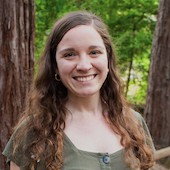 |
Mikayla BarryProduct and Process Development Scientist Bio Mikayla Barry is a Product and Process Development Scientist at The Clorox Company, where she focuses on both short- and long-term innovation in the home and healthcare spaces. Prior to joining Clorox, Mikayla earned her Ph.D. in Materials from the University of California, Santa Barbara and her B.S. in Biomedical Engineering from Texas A&M University. Her research throughout her undergraduate and graduate careers centered on the interactions that govern hydrated polymer surfaces such as water purification membranes, marine coatings, and biomedical implants. During her time as an ALS Doctoral Fellow, Mikayla investigated water-induced polymer surface reconstruction and secondary interactions between surfaces and water or other solutes. Outside of work, Mikayla is an avid musician and loves spending time outdoors with her hobbies of running, hiking, and backpacking. |
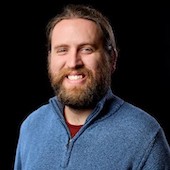 |
Thomas J. FerronPostdoctoral Scholar Bio Thomas J. Ferron is a Postdoctoral Scholar in the Nanoscale, Surface, and Interface Science Group within the Materials Science Division at Lawrence Livermore National Laboratory (LLNL). His research broadly focuses on developing synchrotron-based X-ray techniques to examine how material properties are influenced by their atomic-, nano-, and meso-scale morphology. His portfolio includes materials research critical for energy generation, drug delivery, and microelectronics. Thomas received his B.S. in Physics from Oregon State University, spent time working in the Logic Technology and Development group at Intel, and received his Ph.D. in Physics from Washington State University. Prior to joining LLNL, he was awarded a National Research Council Postdoctoral Fellowship at the National Institute of Standards and Technology. |
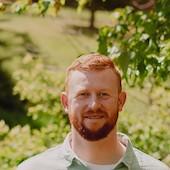 |
Devin GrabnerSystems Analyst, Acoustics Research Detachment MBA and PhD Student, Physics Bio Devin Grabner serves as a Systems Analyst at the Acoustics Research Detachment within the Naval Surface Warfare Center Carderock Division of the U.S. Navy. His current responsibilities center on the development of silencing technologies and methodologies aimed at diminishing the signatures of surface, submarine, and unmanned aquatic vehicles. Simultaneously, he is finishing his MBA and PhD in Physics at Washington State University (WSU). His PhD work focuses on the development of synchrotron-based X-ray techniques and instrumentation for investigating the complex multi-phase structures and dynamic interactions of polymeric micelles and other nanostructures in liquid environments. Devin received his M.S. in Physics from WSU and his B.S. in Physics and Organic Chemistry from Walla Walla University. While a PhD student, he was an Advanced Light Source Doctoral Fellow. Alongside his academic pursuits, Devin brings extensive practical experience, having served as an Emergency Medical Technician, structural firefighter, wildland fire engine captain, and nine years of experience in the U.S. Air Force. |
 |
Natalie M. LarsonAssistant Professor, Mechanical Engineering Bio Natalie M. Larson is an Assistant Professor of Mechanical Engineering at Stanford University. Her lab develops hybrid manufacturing methods (e.g., multimaterial 3D printing with subvoxel control) and applies in-situ characterization techniques (e.g., 4D X-ray computed tomography) to investigate new classes of hierarchical architected materials. Previously, she was a postdoctoral research fellow at Harvard University. She earned her Ph.D. in Materials from the University of California, Santa Barbara and her B.S. in Materials Science and Engineering from the University of Washington. During her Ph.D., she was an Advanced Light Source Doctoral Fellow in Residence at Lawrence Berkeley National Laboratory. |
<<Return to 2024 User Meeting